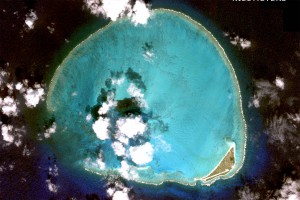— Giuseppe Notarbartolo di Sciara
Within the framework of the Second International Conference on Marine Mammal Protected Areas, which is being organised in Fort-de-France, Martinique, from 7-11 November 2011 by the French National MPA Agency, a workshop is being planned on the role of MPAs in the conservation of monk seals.
Building on the results of a previous meeting, which took place during the First international Conference on Marine Mammal Protected Areas (Maui, March 2009), the aim of this workshop will be to further explore ways in which the MPA tool can be used to protect the two extant critically endangered representatives of Monachus which still survive in their respective Mediterranean, North Atlantic and Hawaiian habitats. Emphasis of this workshop will be to emphasize the differences of the challenges posed to conserving the two species, and on such basis to explore the pros and cons of MPA establishment, as opposed to the implementation of “conventional” conservation measures.
In order to make plans for the monk seal workshop and to allow a structuring of its programme, it would greatly help me to have an idea of who is likely to attend. If you intend participating to the ICMMPA in Martinique next November, and if you are interested in attending the monk seal workshop, I would appreciate it if you could kindly let me know. It would be also great to know if you have any direct experience in the field of monk seal MPAs and conservation (in the Mediterranean, the North Atlantic or Hawaii) that you would be willing to share during the workshop.
Feedback will be particularly appreciated if sent to the email address below before the end of August, thank you.
Giuseppe Notarbartolo di Sciara — giuseppe@disciara.net

 A controversial decision by federal officials to “lethally remove” an adult Hawaiian monk seal that was attacking — and apparently killing — pups at Kure Atoll in the Northwestern Hawaiian Islands had to be put on hold: The seal was nowhere to be found.
A controversial decision by federal officials to “lethally remove” an adult Hawaiian monk seal that was attacking — and apparently killing — pups at Kure Atoll in the Northwestern Hawaiian Islands had to be put on hold: The seal was nowhere to be found. Hawaiian monk seals and local fishermen haven’t been getting along very well. And fishermen aren’t happy about a proposal to extend a conservation zone around the main Hawaiian islands to further protect the endangered species.
Hawaiian monk seals and local fishermen haven’t been getting along very well. And fishermen aren’t happy about a proposal to extend a conservation zone around the main Hawaiian islands to further protect the endangered species. NOAA says it plans to euthanize one and possibly two adult male Hawaiian monk seals at Kure Atoll in the Northwestern Hawaiian Islands this month to protect female monk seals and pups.
NOAA says it plans to euthanize one and possibly two adult male Hawaiian monk seals at Kure Atoll in the Northwestern Hawaiian Islands this month to protect female monk seals and pups. The National Oceanic Atmospheric Administration (NOAA), National Marine Fisheries Service (NMFS), Pacific Islands Regional Office (PIRO) has published the
The National Oceanic Atmospheric Administration (NOAA), National Marine Fisheries Service (NMFS), Pacific Islands Regional Office (PIRO) has published the